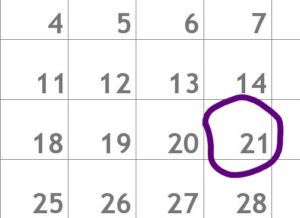What I’m listening to: Rocking by Roger Whittaker
 It’s getting real now. Today’s the winter solstice. The shortest day of the year. The day I look forward to because every day beyond this one means the sun will take a little longer to set every night.
It’s getting real now. Today’s the winter solstice. The shortest day of the year. The day I look forward to because every day beyond this one means the sun will take a little longer to set every night.
It’s all uphill from here.
Then there’s that holiday season about to hit us like bricks. I go through small bouts of depression during the holidays. I’m not one to try recapturing the past — it’s gone. But the twisting in the wind that I should have worked out well before now still happens. If you get depressed at holiday time, I sympathize.
This year isn’t so bad for some reason. I guess because I’ve had a family-filled year, or that I’ve decorated the bejeezus out of the house … hard to say.
So as we have less daylight today than any other day of the year, let’s make the daylight hours count.
December 21: Adopt a Client Winning Move
That could mean quite a lot, but today it means one thing:
Talk like your client.
I’m not saying undergo a personality change. I’m saying when you’re writing to or for your client, use their words. Here’s how I do it, particularly with new clients:
- Record conversations: If we have phone conversations, I make sure to tape them so I’m able to remember everything. That also helps when I’m trying to find the right phrasing — it’s usually there on tape. I’ll clean it up if need be, but I like to use snippets of the client’s own words somewhere in the project. Why that works: if they’re using those words to tell you about the project, those are the words they’re going to respond to.
- Borrow from email conversations: If it’s a revision or even a first project together, I’ll read through those emails and mine the phrases or one sentence that brings it home for them. Don’t think it’s all verbatim — I’ll often paraphrase and use that main thought to add to the entire project — but do think that the seeds are there. It’s just up to us to nurture the plant.
That’s it. Going forward, pay attention to conversations with your clients. Record them when you can, and use emails to help you flesh out those points that will help get the project where they want it to be.